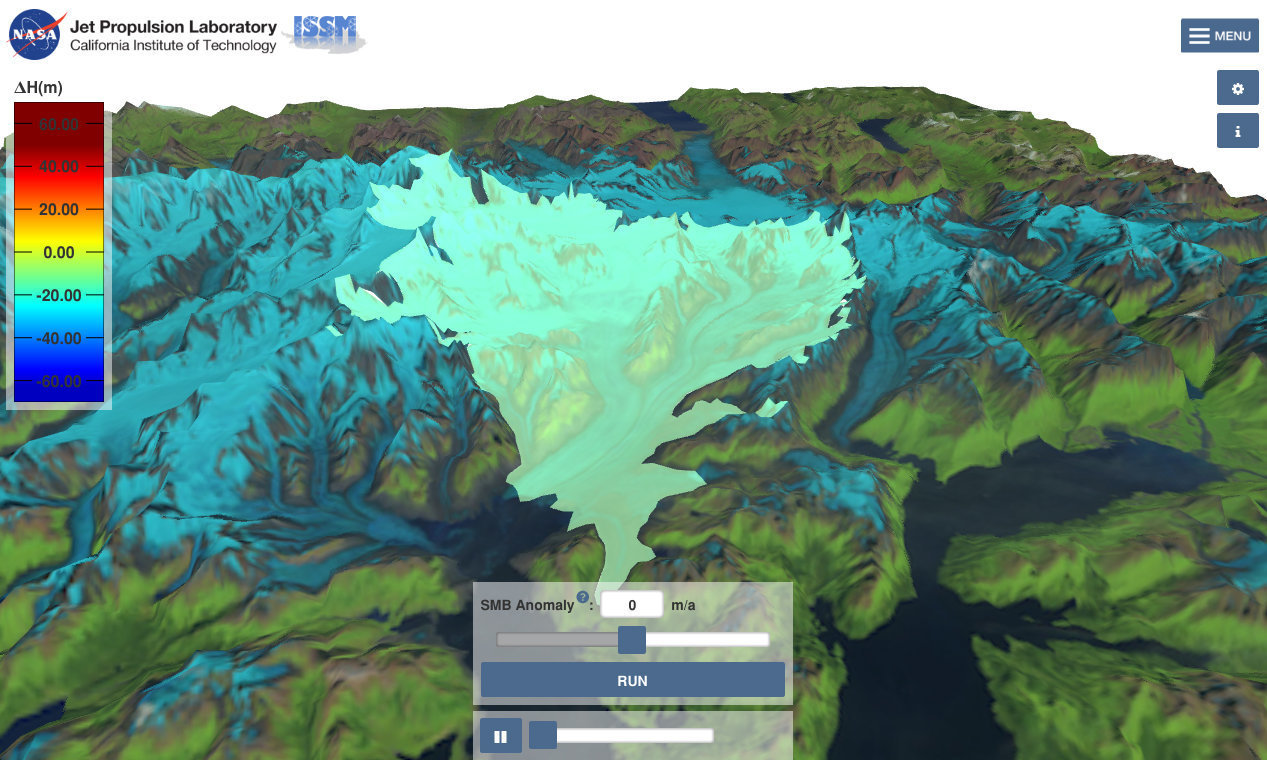Virtual Earth System Laboratory

Welcome to the Virtual Earth System Laboratory! Here, the Ice Sheet System Model (ISSM) team hosts simulations related to glaciers, ice sheets, sea level and solid earth.
Our earth science simulations fall into one or more categories, which can be reached via the links below.
Glaciers
Simulations of Glacier Flow and Sensitivity to Climate
Model the evolution of glaciers in Alaska, Patagonia and the Himalayan regions in response to variations in surface temperature, snow precipitation, and other factors related to climate change.
-
Model the evolution of Columbia glacier, Alaska. Based on work carried out by Dr. Gardner and Dr. Larour.
-
Understand the evolution of Haig glacier, Canada over 30 years. Based on work carried out by Dr. Adhikari.
Ice Sheets
Simulations of Ice Sheet Flow and Sensitivity to Climate and Forcings
Model the evolution of ice sheets such as Greenland and Antarctica, and understand the factors that control their evolution and contribution to sea level rise in the coming decades/centuries. This includes basal friction at the ice/bed interface, snow precipitation, temperature, etc.
-
This simulation of Greenland is the result of work carried out by the ISSM team for the SeaRISE experiments.
-
This is an animation showing the simulated retreat of the Southwestern portion of the Greenland Ice Sheet during the Holocene (~ the last 12,000 years).
Sea Level
Simulations of Sea Level Rise and Contribution from the Cryosphere
Model the evolution of sea level over the entire Earth, and understand the contribution of glaciers and polar ice caps to its rise or decline in a changing climate.
-
This model quantifies the impact of Antarctica and Greenland melt on eustatic sea level rise in the US.
-
This model computes local sea level perturbations using GRACE observations of melt in Greenland and Antarctica.
-
Gradient fingerprint mapping of local sea-level with respect to ice loading over all glaciated areas of the world.
-
Model the observed polar motion and estimated contribution from various factors for a time series.
-
Results of a new study on negative feedbacks from Solid Earth and Sea-Level processes on grounding line retreat in Antarctica, along with corresponding impacts on the contribution of Thwaites Glacier to future sea-level rise.
-
Statistical sampling of an ice sheet model simulation of the Antarctic Ice Sheet over a 100-year period, varying its climate forcing.
Solid Earth
Simulations of Processes Undergone by the Earth's Lithosphere and Mantle
Here you will find simulations related to the Earth' interior. This includes models of geothermal heat flux and their impact on the thermal profile of polar ice sheets, models of mantle plumes under the ice, models of Glacio-Isostatic Rebound, and other models related to processes undergone by the earth lithosphere and mantle.
-
This simulation of Greenland explores the sensitivity of melt-rate and temperature at the ice/bed interface to geothermal heat flux distribution.
-
Present-day GIA trends (gravity, uplift and geoid). Statistics (expectation and standard deviation) were derived from a Bayesian ensemble of 100,000 models constrained by a global data set of relative sea level and GPS data.
